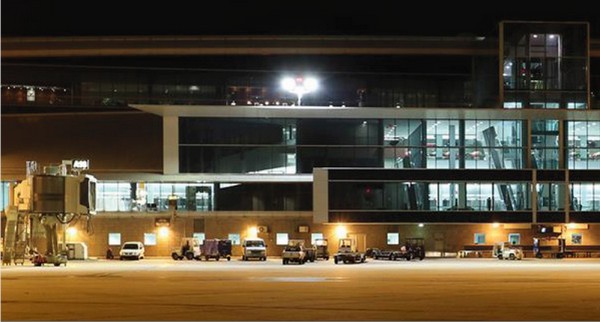The U.S. Department of Energy's GATEWAY program has released a report on a trial installation of LED apron lighting at Philadelphia International Airport (PHL). In addition to reducing energy, PHL also hoped to reduce required maintenance, reduce light pollution, and increase safety with an improved lighting system.
To minimize the complexity and cost of installing the new lighting system, PHL staff chose to replace the existing high-pressure sodium luminaires on a one-for-one basis. An evaluation of an initial trial installation of three LED luminaires was conducted in October 2014 and led to recommended improvements in the system design and evaluation procedures. Consequently, a second trial installation was evaluated in May 2015 and was calculated to bring energy savings somewhere between 24.5% and 51.5%, depending on the mix of high- and medium-output LED luminaires installed.
 |
|
Phildalphia International Airport after LED lighting upgrade. (Photo courtesy of DOE) |
This type of high-mast application remains challenging for LED technology. Among the lessons learned from this project that may help facility managers and LED product manufacturers better meet the challenges:
-
Need for establishing clear design criteria and constraints for the LED project. The only way to fairly evaluate the large number of options available for a largescale LED project is to establish some clear criteria at the outset of the project.
-
Importance of trial installations and mockups. While detailed computer analyses can help to assess illuminances in different areas of an application, they cannot replace the experience of viewing a trial installation under realistic conditions.
-
Careful review of calculations of photometric quantities. The PHL staff received many inquiries from a number of luminaire manufacturers and sales agencies, who often provided computer analyses that failed to accurately reflect the system requirements.
To see the complete findings, download the full report from the DOE SSL website.












